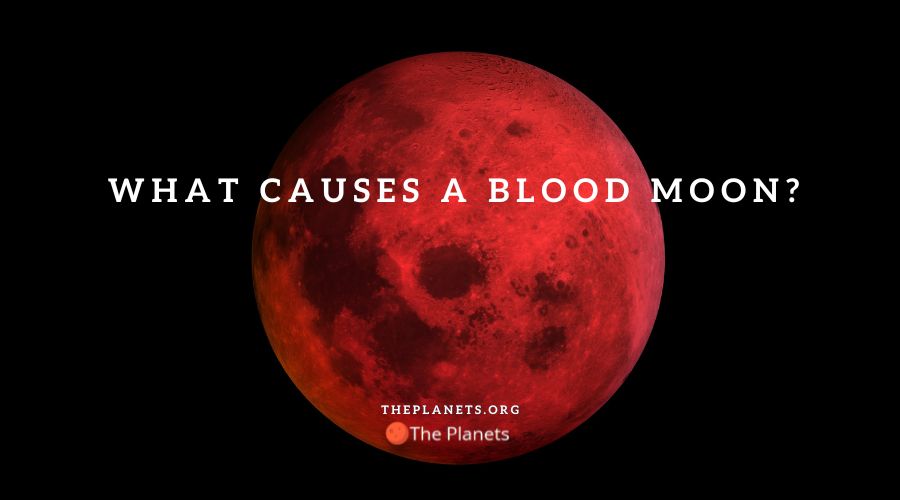
Blood Moon Legends
Legends about the blood moon date back to ancient times. The Incans believed that the color meant that a wild jaguar attacked the moon and thought the same animal could attack them. Those living in Mesopotamia thought that a blood moon was a warning that someone might attack and kill the king, which is why they forced him into hiding. Many people in India still believe that a blood moon symbolizes a bad fortune.
They have rituals regarding how they act and what they do during a blood moon to protect their families. Some Native American tribes would gather and sing songs to soothe the moon as they believed the bright red color meant that the moon was sick.
When Does a Blood Moon Occur?
A blood moon is a phase that can only happen during a lunar eclipse. During a lunar eclipse, the Earth changes positions in regards to the sun and moon. As the positions of the sun and moon do not change, the sun will cast a deep shine onto the planet that causes the Earth to place a large shadow on the moon. You can view a list of dates to see when you can view the next blood moon.
What Causes a Blood Moon?
The reason that we see a blood moon rather than a white moon is simply because of the Earth’s shadow. Though the planet will cast a strong shadow on the moon, the sun is still high in the sky and shining. Those beams will hit the Earth and wrap around the sides of the planet before refracting and striking the moon. The combination of the dark shadows from the Earth and the orange rays of the sun reflect on the moon and make it appear red. It also occurs because of the short wavelengths that are red or orange. As those waves hit the moon, they change its color.
How Often Does a Blood Moon Happen?
Blood moons usually happen two times each year. That doesn’t mean you can see the moon where you live though. How well you can see the moon and the color of the moon often depends on where you live. The angle of your home to the moon and your position on the planet can stop you from seeing the moon. Astronomers estimate the next blood moon for May 16, 2022. This will be one of the first times in recent history that a blood moon is visible in both North America and South America.
Blue Band
In addition to a red moon, you might notice a blue band surrounding the base or the bottom edge of the moon. The ozone layer of the Earth filters some of the light that you normally see and can affect the colors that are visible to the naked eye. When the blood moon first rises, the ozone layer breaks up some of the red light from the sun and lets more of the natural blue light come through. You can often see the blue band near the end of the lunar eclipse too.
Red Moon Rising
The Danjon Scale is a scale that scientists use to determine the brightness during a lunar eclipse. It ranks from zero to a nearly complete blackout that causes the moon to disappear into the sky to a four, which is when the moon has a deep orange color with a blue band around its edges. You can use this scale to measure the brightness that you see too. Blood moons are safe to view without any special equipment. With this information, you can share what you know about a blood moon during the next lunar eclipse.